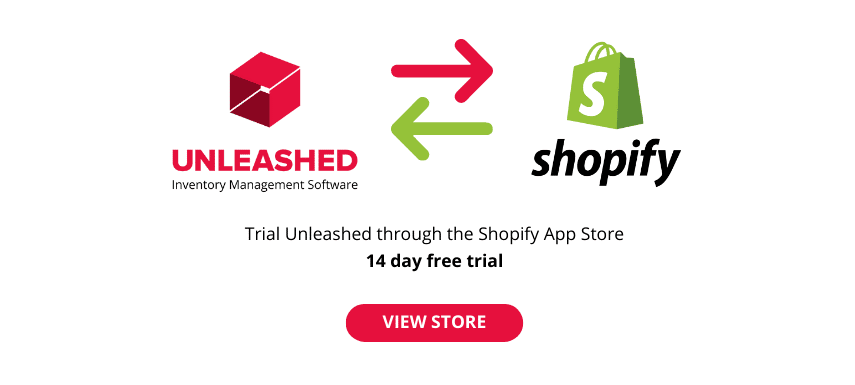
Ecommerce is booming, and businesses are looking to future-proof their online stores.
Enter headless commerce - the solution that lets you decouple your eCommerce ‘back-end’ from its ‘front-end’.
So what does headless commerce do, why is it so useful and who is using it? And last but not least – is it the future of eCommerce? We answer all your most common questions.
What does headless commerce mean?
Headless commerce – or headless eCommerce – is when a business has decoupled the front- and back-end of its digital systems.
The term, coined by entrepreneur Dirk Hoerig, came to the fore around 2013. Its value grew along with the boom in technology, as it became clear there were benefits to being able to adjust the back-end of a business’s eCommerce systems without disrupting the front-end – or vice versa.
In practical terms, this means for example that upgrades can be implemented in the back-end systems without disrupting sales at the front-end. It also means customers can have a seamless experience even as work is underway in the background to improve systems or integrate new ones.
What is a headless application? Why is it called headless?
Headless applications are those that can handle specific processes without disrupting other aspects of the digital architecture.
The changes are then integrated through an API – Application Programming Interface – which connects the back- and front-ends through programming commands.
The name ‘headless’ refers to the body (or back-end) being separated from the head (or front-end) – the head being the customer-facing aspects of the business.
Why is headless commerce sometimes called ‘composable commerce’?
Headless commerce is sometimes referred to as composable commerce.
The concept of ‘composable commerce’ is the idea that commerce solutions can be composed of various separate parts to create the ideal outcome for that business’s needs – a bit like building a bespoke Lego creation.
It does this by enabling light-lift changes to business models, supporting open ecosystems – to connect with third-party applications and the like – and being agile in its approach to development and improved digital experiences.
Traditionally, eCommerce platforms have been available as a one-size-fits-all, with businesses operating with integrated front- and back-ends of the digital architecture.
However, the rise of increasingly sophisticated digital businesses, more specific customer expectations and improved technologies meant more bespoke solutions were developed.
Gartner, specifically, defines composable commerce as using Packaged Business Capabilities to support future-proofed commerce experiences.
 Headless commerce allows you to tailor your online offerings by building your store using separate parts – rather than using traditional, less flexible eCommerce platforms
Headless commerce allows you to tailor your online offerings by building your store using separate parts – rather than using traditional, less flexible eCommerce platforms
What is a headless approach to commerce?
A headless approach to commerce is one that prioritises best-in-class front- and back-end technology and layers it in a way that provides an optimal business structure and customer experience.
Doing this ensures more agility, the ability to improve and enhance both back- and front-end systems with minimal disruption, and it keeps the systems open to new APIs and technologies.
Headless commerce vs traditional eCommerce: what’s the difference?
The major difference between headless and traditional commerce is the architecture of the technology.
Traditional eCommerce is structured with set-pieces at the front- and back-ends. These fit together to support a predetermined experience for the user, as well as administrative requirements for the business. This means the eCommerce architecture is very solid, but if changes are needed it can be a long and/or expensive process.
Headless eCommerce is more agile. The decoupling of the front- and back-ends supports easier adoption of new technologies and API integrations, meaning the business can respond more rapidly to industry innovations and customer demands.
Need to manage eCommerce inventory?
Discover real-time inventory control for your eCommerce business here. Learn moreHow does headless commerce work?
Headless commerce works by decoupling the front- and back-end of an eCommerce system.
This means the back-end work – such as storing data, inventory management and other administrative tools – can be done by a system separate to the requirements of the front-end, such as the design of the website and its user experience.
Uncoupling them in this way has several advantages, notably the increased agility to respond to changes such as technological upgrades or innovations, or changes in consumer buying behaviours or trends.
 In headless commerce back-end functions like data storage are separate to the user interface – so you can alter the interface for each channel without back-end changes
In headless commerce back-end functions like data storage are separate to the user interface – so you can alter the interface for each channel without back-end changes
What are headless commerce APIs?
Application Programming Interfaces (APIs) are third-party tools used to connect separate programmes.
For example, if you are given the choice to sign in with a programme through Facebook, Google or other programmes, an API will enable that exchange of information to give you access.
Headless commerce APIs are generally designed to allow for a more flexible front-end – such as changing the user experience, creating a more dynamic interface, or creating bespoke shopping options.
What are the benefits of headless commerce for selling online?
There are several benefits to using headless commerce.
Headless commerce allows the business owner to ‘compose’ their own site architecture, picking and choosing from the technologies available to ensure it meets their specific business needs.
The benefits of headless commerce include:
- Increased personalisation for customers
- The ability to upgrade systems without disrupting the user experience
- The ease with which new technologies can be adopted
There’s been an explosion in online shopping in recent years, led by improved technology, digitally-savvy younger generations, easier payment options such as Buy Now Pay Later, and the Covid-19 pandemic.
This means it's imperative for businesses to have a digital presence. And operating with a headless commerce system means a business can benefit from the rapid innovations in technology we’re seeing.
What are the downsides of using headless eCommerce?
There are also downsides to using headless eCommerce, however.
Working within traditional eCommerce – with its set front- and back-end structures – is in many ways a less complex undertaking. It can be the better choice for companies that have reasonably clear strategic aims and customer bases and less need for rapid shifts in their offerings.
Furthermore, maintaining a headless commerce infrastructure can have significant ongoing costs – such as payments to third parties, or continual site upgrades. Investing in new innovations to improve user experiences can also add to the financial pain.
As such, if you're considering a headless eCommerce structure, it's a good idea to make sure it’s the right fit for your business now and into the future.
 Why has headless commerce become so important? Because eCommerce is booming – even more so with increasingly digitally savvy customers and the effects of Covid-19
Why has headless commerce become so important? Because eCommerce is booming – even more so with increasingly digitally savvy customers and the effects of Covid-19
What should you look for in a headless commerce platform?
The rise of headless commerce has led to a proliferation of solutions that are designed to support certain business and customer needs.
Choosing the headless commerce platform that best suits your business needs can therefore be a baffling task – but there are ways to make it easier.
Business owners should be very clear about how they are trying to serve their customers, and how they are going to future-proof their business.
By doing this, they will be able to break down the requirements for their eCommerce platform and find one that fits best. We suggest the following four criteria as a starting point:
1. User experience and interface
The user experience is key to a successful eCommerce business. If customers have glitchy, slow or unprofessional online experiences, they will be unlikely to return. Furthermore, if the interface is not intuitive, enabling easy shopping and checkout, customers will likely bounce off the site entirely.
In a world with a multitude of digital choices – and the ability to give instant online reviews – losing customers for these reasons can be the beginning of the end for an online business.
2. Capacity for personalisation – both now and in future
Personalisation of customer experiences is set to accelerate as data gathering and shopping behaviour analysis become more sophisticated.
As such, online businesses should invest in customer segmentation analysis to ensure they are able to meet the specific needs of customer groups. It’s also advisable to invest in data analysis to make sure the details of past experiences can be used to inform future business decisions.
3. Service and support
Headless commerce can be a complex beast, particularly if there are multiple third-party integrations in play. As such, the service and support offered by a platform will be important. Efficient, timely and informed support services could end up playing a key role in a business’s success.
4. API integration
Headless commerce relies on APIs (discussed above) to link all its parts, so businesses should look for systems that can easily integrate with others.
 In addition to offering a more traditional eCommerce platform with connected front- and back-ends, Shopify allows you to decouple the back-end and create a bespoke user interface
In addition to offering a more traditional eCommerce platform with connected front- and back-ends, Shopify allows you to decouple the back-end and create a bespoke user interface
How do you build a headless Shopify store?
Shopify’s default architecture is to have the front and back-end connected, but users can also use Shopify to build a headless commerce store.
To do so, Shopify users need to identify what technology they want to use at the front-end to create the interface for the consumer. Once that has been established, users can access the Shopify Storefront API, which is the tool that links up the system architecture and enables the addition of other APIs.
Once the Storefront API is integrated, other APIs and changes to the overall system can be explored. The end goal should be an online solution that is aligned specifically with the business’s needs.
What types of businesses are suited to headless commerce?
Headless commerce generally suits fast-moving, consumer-led businesses. It also suits those that are well-funded and with good cashflow, given the initial investment and ongoing maintenance costs of headless commerce.
Implementing headless commerce can be a major financial commitment, and for smaller companies, it may not be possible. Furthermore, for companies that have steady and regular orders, the need to react quickly to changing trends may not be a priority.
However, it’s important to remember that any business needs to be constantly future-proofing, and more bespoke customer experiences are likely to become the norm across all industries in the next few years. As such, any business owner would be well advised to start exploring headless commerce to see if it could be a good fit, now or in the future.
 Headless commerce allows for the presentation of products and services across a range of channels and devices – an important function in the Internet of Things age
Headless commerce allows for the presentation of products and services across a range of channels and devices – an important function in the Internet of Things age
What are examples of companies that use or offer headless commerce solutions?
- Online shopping behemoth Amazon uses headless commerce to support its rapid response to customer requirements and huge delivery demands.
- Shopify, a leading eCommerce platform, has a traditional default structure in which the back- and front-ends are connected. But users of its offshoot Shopify Plus, which is designed for small-to- medium businesses, are also able to take advantage of its headless commerce offering.
- Contentful, offers headless commerce solutions which it says helps in ‘transforming retail’. Contentful’s website says industry leaders are looking for purpose-built technology stacks that can serve multiple teams and integrate with each other.
- Acro Media, which provides a consultancy service for eCommerce businesses, offers a headless commerce structure which it advertises as a ‘tailored customer journey’ through the cart and checkout.
- OroCommerce is focused on the needs of distributors, manufacturers and wholesalers. Its technology is open source, which encourages innovation and flexibility as it extends and increases its offering.
Is headless commerce the future?
Headless commerce seems – almost inevitably – the way of the eCommerce future.
The days of monolithic online architecture are fast fading as consumers demand increased personalisation and technologies create more bespoke offerings.
And consumers are interacting with products online using a greater range of devices in the Internet of Things (IoT) age – from the more familiar computers and tablets, to smartwatches, internet-connected fridges and more.
Headless commerce allows you to alter the presentation of your products and services for each channel, without having to change the back-end architecture for each of these completely. It means less investment in channels that may or may not bear fruit.
Despite the high costs of implementing or converting to a headless commerce system, the long-term payback may be well worth the investment.
Is headless commerce suited to SMEs?
Headless commerce is generally best suited to rapid turnover, consumer-led businesses. As it can be costly to implement, it is usually most suitable for businesses with a healthy budget and the ability to fund ongoing maintenance.
Further, it can be more suitable for businesses that have a CMS (Content Management System) in place, but who are looking to expand their eCommerce footprint – or better personalise the user experience.
Headless commerce may also be advisable for conglomerates that have several separate entities with specific digital needs and eCommerce preferences.

